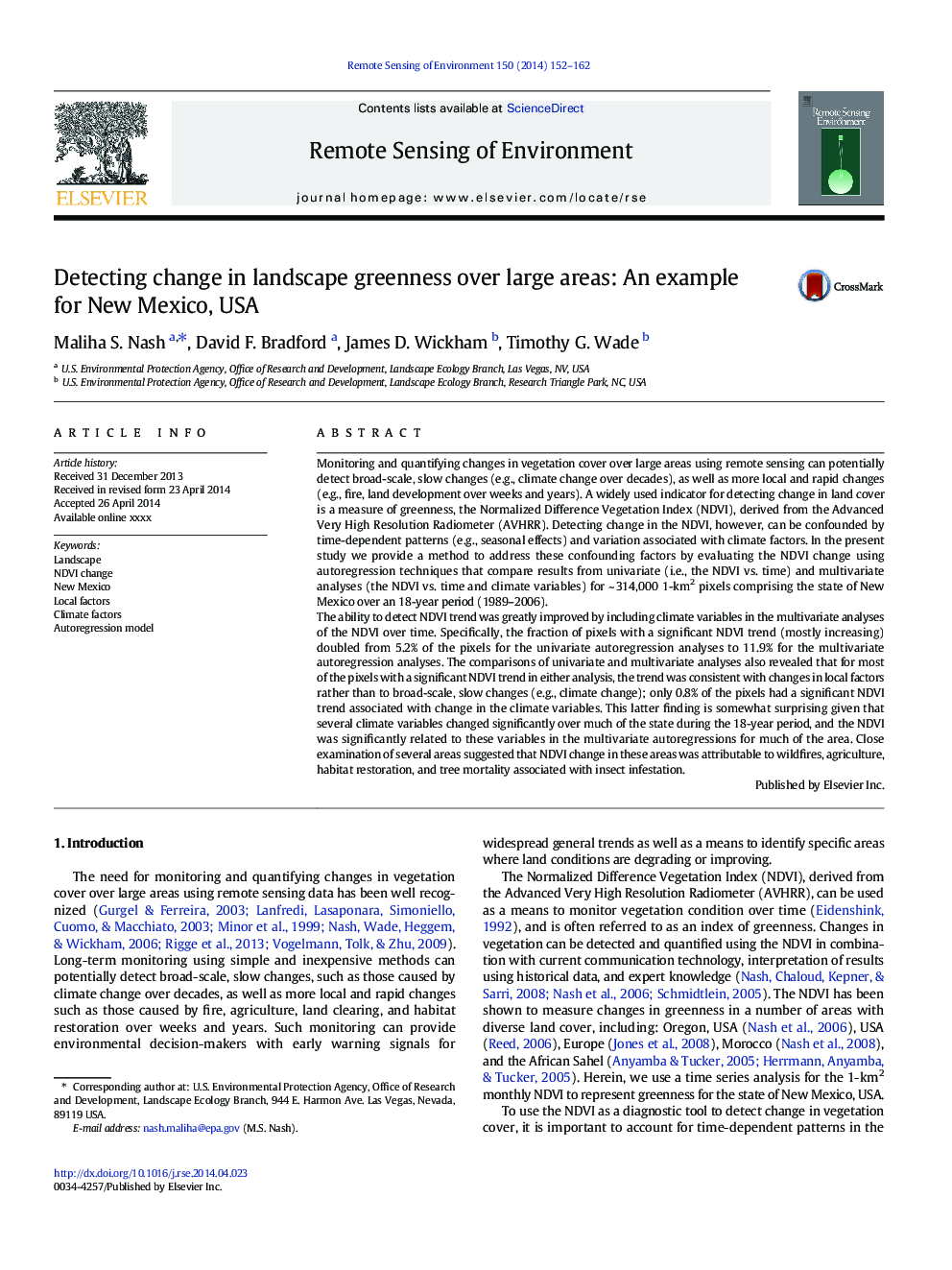| Article ID | Journal | Published Year | Pages | File Type |
|---|---|---|---|---|
| 6346657 | Remote Sensing of Environment | 2014 | 11 Pages |
Abstract
The ability to detect NDVI trend was greatly improved by including climate variables in the multivariate analyses of the NDVI over time. Specifically, the fraction of pixels with a significant NDVI trend (mostly increasing) doubled from 5.2% of the pixels for the univariate autoregression analyses to 11.9% for the multivariate autoregression analyses. The comparisons of univariate and multivariate analyses also revealed that for most of the pixels with a significant NDVI trend in either analysis, the trend was consistent with changes in local factors rather than to broad-scale, slow changes (e.g., climate change); only 0.8% of the pixels had a significant NDVI trend associated with change in the climate variables. This latter finding is somewhat surprising given that several climate variables changed significantly over much of the state during the 18-year period, and the NDVI was significantly related to these variables in the multivariate autoregressions for much of the area. Close examination of several areas suggested that NDVI change in these areas was attributable to wildfires, agriculture, habitat restoration, and tree mortality associated with insect infestation.
Related Topics
Physical Sciences and Engineering
Earth and Planetary Sciences
Computers in Earth Sciences
Authors
Maliha S. Nash, David F. Bradford, James D. Wickham, Timothy G. Wade,
